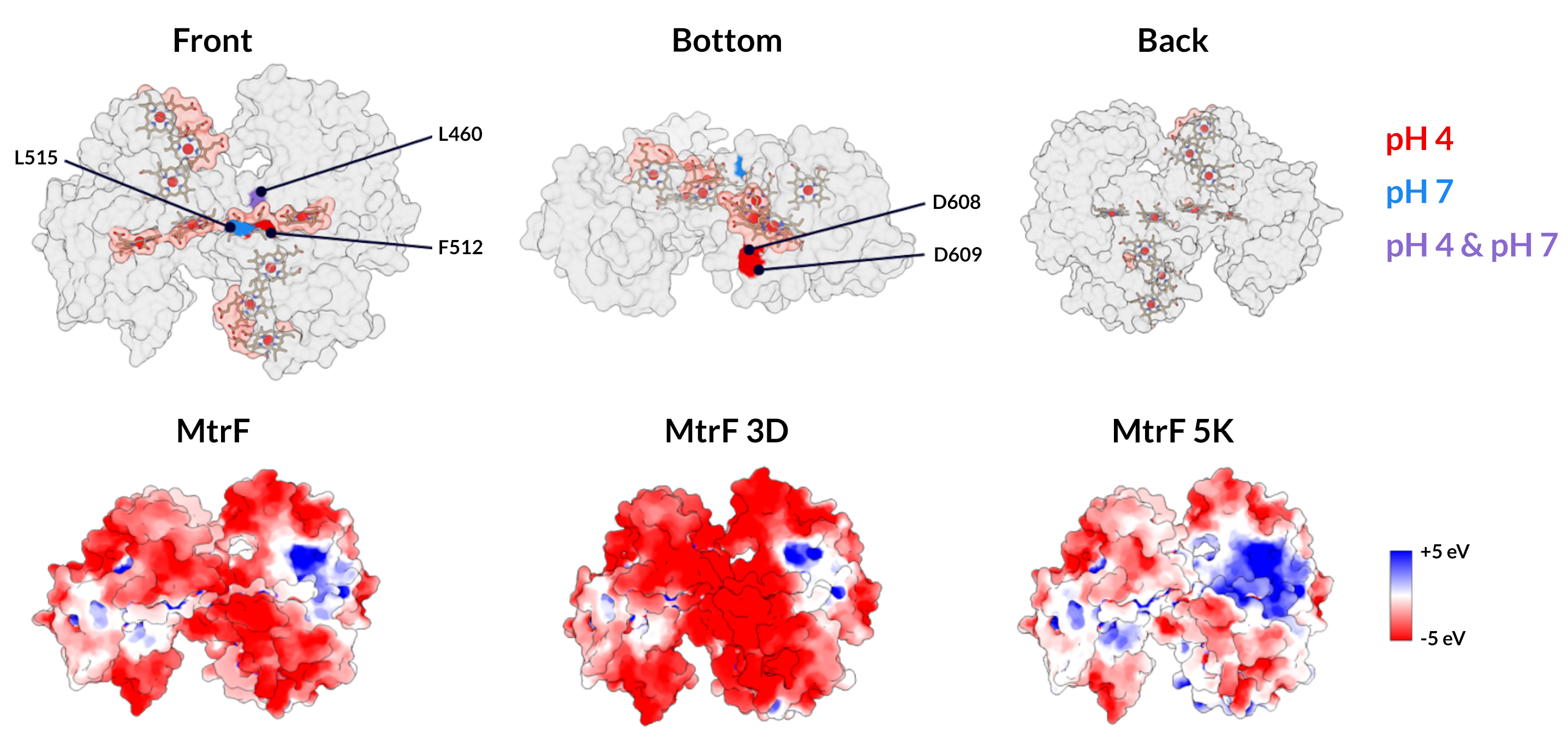Scientists have discovered the details of an unconventional coupling between a bacterial protein and a mineral that allows the bacterium to breathe when oxygen is not available. The research could lead to innovations in linking proteins to other materials for bioelectronic devices such as sensors that can diagnose disease or detect contaminants.
The protein in this study was taken from Shewanella oneidensis, a metal-reducing bacterium that interacts with a wide range of materials. The protein’s structure had previously been mapped using x-ray crystallography, but those experiments didn’t show the protein bound to the mineral. So, the researchers turned to x-ray footprinting at ALS Beamline 5.3.1. In this technique, x-rays produce hydroxyl radicals in a liquid solution surrounding the protein. The radicals modify the protein wherever the solution comes into contact with the protein. Regions of the protein interacting with other proteins or materials are protected, leaving a “footprint” indicating where binding occurs. The x-ray footprinting snapshots were subsequently analyzed using mass spectrometry at the Joint BioEnergy Institute. The study also benefited from tools and expertise at Berkeley Lab’s Molecular Foundry.
The results show that the protein only interacts with the mineral in a small area, requiring about five times less binding energy than typical proteins that form biominerals. The research team is now working on how this and similar proteins interact with a range of minerals. For example, they produced a modified form of the protein that binds to the same mineral with twice the affinity, enabling better electronic connections and thus more sensitive bioelectronic sensors.

Work performed at ALS Beamline 5.3.1.
T. Fukushima, S. Gupta, B. Rad, J.A. Cornejo, C.J. Petzold, L.J.G. Chan, R.A. Mizrahi, C.Y. Ralston, and C.M. Ajo-Franklin, “The Molecular Basis for Binding of an Electron Transfer Protein to a Metal Oxide Surface,” J. Am. Chem. Soc. 139, 12647 (2017), doi: 10.1021/jacs.7b06560.
Adapted from the Berkeley Lab news release, “X-ray Footprinting Solves Mystery of Metal-Breathing Protein.”